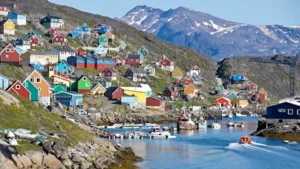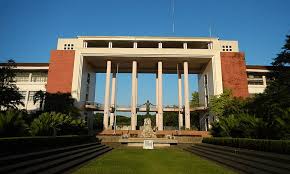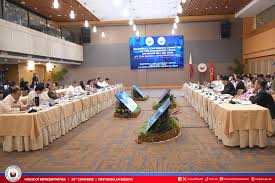📷Greenland | BBC
Those who thought Donald Trump was kidding when he offered to buy Greenland in 2019 and reiterated that he wants to kick out Denmark from the autonomous territory even before retaking the White House should be told that Trump was damn serious. It is actually the fifth time that the US offered to take over the 770,000-sq mile island.
Imperialism being what it is, the US coveted Greenland as early as the 19th century, when US Secretary of State William Seward raised the idea of annexing Greenland, along with Iceland, in 1867. The US eventually purchased Alaska from Russia. This was the time when America was rising from the ashes of the Civil War and the ascendant industrial class was seeking to expand its production and open up markets overseas, principally China, and overtake the declining British Empire. Yet, 43 years later, the US tried again to grab Greenland.
In 1910, then US ambassador to Denmark, Maurice Francis Egans, made the Danish government an offer: To exchange Greenland in return for the Dutch Antilles and the Philippine island of Mindanao. Yes, after buying the Philippines from Spain for $20-million, the US wasted no time in trying to swap Mindanao and the Dutch Antilles for Greenland, which America considered to be teeming with oil and gas and minerals like uranium. In 1946, when the US granted the Philippines its sham independence, then US Secretary of State James Byrnes presented the first offer to buy the island for $ 100 million in gold bullion – worth roughly $1.5-billion (£1.3bn-billion) today. Apparently, the US wanted Greenland as part of its defense perimeter, with its forces capable of containing the Soviet Union and policing Europe. Later, the US established a military base in Greenland that monitored not only the Arctic but also Eastern Europe.
In 2019, Trump broached the idea of purchasing Greenland to Danish Prime Minister Mette Frederiksen who rebuffed him and described his suggestion as “absurd.” Greenland is an autonomous Danish territory with its own prime minister governing 56,000 inhabitants, practically all living in the coastal areas, as more than 80% of the island is covered with ice. With Trump now reoccupying the White House, he is now doubly obsessed with the biggest landgrab on the planet. He has not ruled out a military adventure to conquer Greenland, and Denmark responded to the threat by increasing its defense budget and starting talks with NATO member-countries on what to do with the demented plan of Trump.
Any attack on Greenland will trigger a collective NATO response under Article 5 of the treaty but the absurdity of it all is that the US is a NATO member and is expected to behave as a civilized country, not a rogue state. Reporting for BBC News on Jan. 22, 2025, Sarah Derouin wrote that Greenland is getting a lot of international attention for its mineral resources and asked: What is hiding under the ice? “The riches thought to lie beneath Greenland’s icy terrain have been coveted for more than a century. But how easy are they to access, and will climate change make any difference?” she asked. Detailed mapping collaborations and explorations carried out over more than a century have uncovered evidence of important mineral resources in Greenland – including rare earth elements and critical minerals used for green energy technologies, as well as suspected fossil fuel reserves. The only mineral mined in Greenland with some success was cryolite, a type of ice with high melting point that is used to manufacture aluminum for planes.
Processing minerals can also be a fraught endeavor. Unlike a mineral such as gold, which is found in its native state within a rock, rare earth elements are locked within another complicated mineral, explains Kathryn Goodenough, principal geologist with the British Geological Survey. “Those deposits are very, very difficult to process, and sometimes intimately connected with uranium or with other elements that you might not want to be mining,” she added. Indeed, if a mineral is locked in tandem with radioactive minerals, the mine could stop before a single gram is processed.
In 2021, Greenland passed a law limiting the amount of uranium in mined resources, an action which froze the development of a rare earth element mine in Southern Greenland. The current parliament reflects Greenlanders’ concerns over mining’s long-lasting impacts. Three legacy mines on Greenland caused marked environmental damage, especially to the water around the island, said Anne Merrild, head of sustainability and planning at Aalborg University, Denmark. Merrild explains that in mining, trash rock from the process is put into two categories: waste rock and tailings. “The tailings are the most polluted leftovers, whereas waste rock is considered less damaging,” she says. Because of this view, waste rock was dumped along rivers and coastlines. But the waste rock was not inert, caused pollution and threatened the water supply.
“The level of heavy metals has been very high in some of the waste rock,” Merrild says. Scientists found elevated levels of the metals in everything from spiders to lichen, fish and bivalves near the mines. The cold temperatures and low salinity around Greenland made environmental recovery painfully slow, and effects can still be detected 50 years later, says Merrild. “Damaging the water is really damaging the whole food supply of Greenlanders and their opportunity to have a livelihood based on fisheries and hunting.” Climate change is drastically affecting the Arctic, with temperatures rising nearly four times faster than the rest of the planet. New estimates show the Greenland ice sheet is losing 30 million tons of ice an hour. While the retreat of the inland ice will reveal more buried rock, Merrild notes that the melting is not a driving factor for the increased interest in exploration. After all, glacier melting takes a long time. (DIEGO MORRA)




